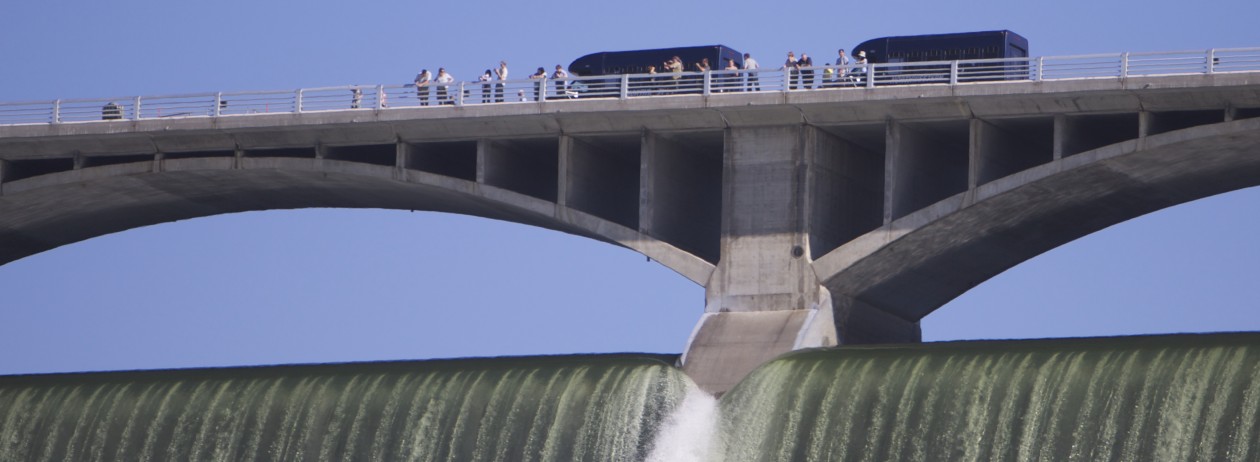Omak
The busy hub of the Okanogan valley features year-round entertainment for tourists from all walks of life. Whether you’re looking for a relaxing vacation full of camping and recreation activities or you want to attend a play, go to a rodeo or play some softball, you can do it all in Omak.
Visiting Omak is like taking some good medicine. At least that’s what some of the Indians thought when they traveled across the vastness of what is now called Okanogan County.
The center of the county is Omak, which means “good medicine,” because of its dry, healthful climate. Warm summers and mild winters lead to an average of over 300 days of sunshine a year.
Located in the fertile Okanogan River Valley near the pristine Pasayten National Wilderness, this lumber town is the largest in the north central part of the state and is known for its production of apples and its many orchards.
Visitors are encouraged to make the Tourist Information Center their first stop. A friendly staff will provide updated information for all areas of Okanogan County, the state of Washington and neighboring British Columbia, including available tourist attractions, facilities and services.
As the hub of the “all season” Okanogan vacationland, Omak offers vacationers a wide range of recreational opportunities. The city-operated Eastside Park offers full camping, R.V. facilities and showers, a new swimming pool, a golf course and bowling.
Conconully State Park
Conconully State Park, located in a side valley above Omak, is a cool, restful oasis on the banks of the Conconully reservoir, developed in the 1900s for irrigation. The park features standard and primitive campsites, and an expansive picnic area, complete with enormous shade trees, a picnic shelter, and a wading pool and play structure for youthful visitors.
Near the park entrance, a replica of the first county courthouse stands. It features a sod roof and is typical of many of the ranch cabins that dotted this landscape in the early years of white settlement in Okanogan County.
To reach the park, take the Riverside cut-off road from Highway 97, 5.2 miles north of Omak. The cut-off road will intersect Highway 215, follow this highway 10 miles to Conconully and follow signs to the park.
Bridgeport State Park
Bridgeport State Park is located near the enormous hydroelectric facility at Chief Joseph Dam. The green, fertile lawns of the park form a welcome relief from the brown, barren desert surroundings.
The park features standard, RV hookups and handicap-accessible campsites, picnic sites and shelters, a children’s play facility, swimming beach, trailer camp and a nine-hole golf course.
To escape from the summer heat, cottonwood and aspen trees are scattered throughout the campground. Wildlife that can be seen in the park include marmots, coyotes, rabbits, quail and (watch your step) rattlesnakes.
The park is located near the town of Bridgeport on a spur road off Highway 17.
Alta Lake State Park
On a forested side canyon, above the arid valley near Pateros, is lovely Alta Lake State Park. Elevation, foliage and the cool waters of Alta Lake make this park a popular summertime attraction. Boating, trout fishing, camping and hiking are some of the many activities available here.
Campers can find standard, RV hookups and primitive sites, plus a group camp for clubs and organized groups. Nearby attractions include a golf course, guided horseback rides and boat rentals. To find the park, drive 1.8 miles west on Highway 153 from Pateros, turn left on Alta Lake Road and follow the signs to the park.
After a busy day, tourists wishing for a little relaxation and entertainment combination are urged to attend a program at Omak’s Performing Arts Center. The organization’s ultimate goal is to bring the world’s great performers to Okanogan County in its state-of-the-art theater.
The center presents live music, dance, and serious adult theater. Stand-up and clap aloud as family entertainment abounds from the 564-seat center.
Flowing through the Okanogan Valley just north of Omak, the Okanogan River slips down the cleft of what geologists say is the meeting point of two ancient subcontinents that once were separated by a sea.
